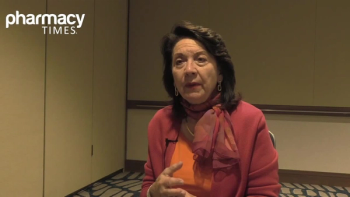
Cancer Survival Among Young Adults, Adolescents Better Than Previously Thought
New analysis examines the role of the HIV/AIDS epidemic in cancer survival rates among adolescents and young adults.
Cancer survival rates in young adults and adolescents have demonstrated more substantial improvements than previously thought, according to a new study. The new analysis indicates that the HIV/AIDS epidemic contributed to a significant dip in survival rates among this population.
In the study, which was published in the Journal of the National Cancer Institute, researchers at the Keck School of Medicine of USC and Los Angeles Cancer Surveillance Program reexamined long-term data on cancer survival rates.
According to the researchers, the difference in the new analysis is the adjustment for Kaposi’s sarcoma and lymphoma, which temporarily drove a decrease in survival rates due to the US HIV/AIDS epidemic before antiretroviral therapy was widely available.
For the study, the researchers used cancer registry data from the Surveillance, Epidemiology, and End Results program to examine sex-specific 5-year relative survival trends for children, adolescents, young adults, and older adults diagnosed with cancer from 1973 to 2009. The analysis was conducted with and without Kaposi sarcoma and lymphomas, and before and after the HIV/AIDS epidemic.
Overall, approximately 3.2 million invasive cancer cases were included in the study. Before the onset of the HIV/AIDS epidemic, 5-year survival for adolescents and young adults exceeded that of children and older adults before substantially declining from 1987 to 1997. By the late 1990s, when HIV/AIDS was better controlled, survival rates in adolescents and young adults returned to be higher than most age groups.
From 2005 to 2009, survival among adolescents and young adults demonstrated less progress than other age groups. The researchers noted that this was due to better baseline survival and larger survival gains among children and older adults in recent years.
When HIV/AIDS-related cancers were included in the analysis, 5-year survival cancer survival rates for individuals aged 15 to 39 years during 1989 were 61%, according to the data. After excluding HIV/AIDS-related cancers, the survival rate jumped to 73%. Overall, the researchers indicated that 5-year survival for all cancers among children, adolescents, and young adults is now 80%.
“It’s exciting to have some good news come out of the cancer surveillance data,” lead author Lihua Liu, an associate professor of clinical preventive medicine at USC, said in a press release about the findings. “Our findings confirm the importance and benefit of cancer research and accessing cutting-edge treatment. It highlights the need for research of adolescent and young adult survivorship and their psychosocial challenges.”
The researchers concluded that, apart from the temporary impact of the HIV/AIDS epidemic, survival rates among adolescents and young adults with cancer have seen sustained improvements and superiority compared with other age groups.
References
Liu L, Moke DJ, Tsai K, et al. A reappraisal of sex-specific cancer survival trends among adolescents and young adults in the United States. JNCI: Journal of the National Cancer Institute. 2018.
Young adults’ cancer survival rates jump in surprising new study [news release]. USC’s website.
Newsletter
Stay informed on drug updates, treatment guidelines, and pharmacy practice trends—subscribe to Pharmacy Times for weekly clinical insights.
















































































































































































































